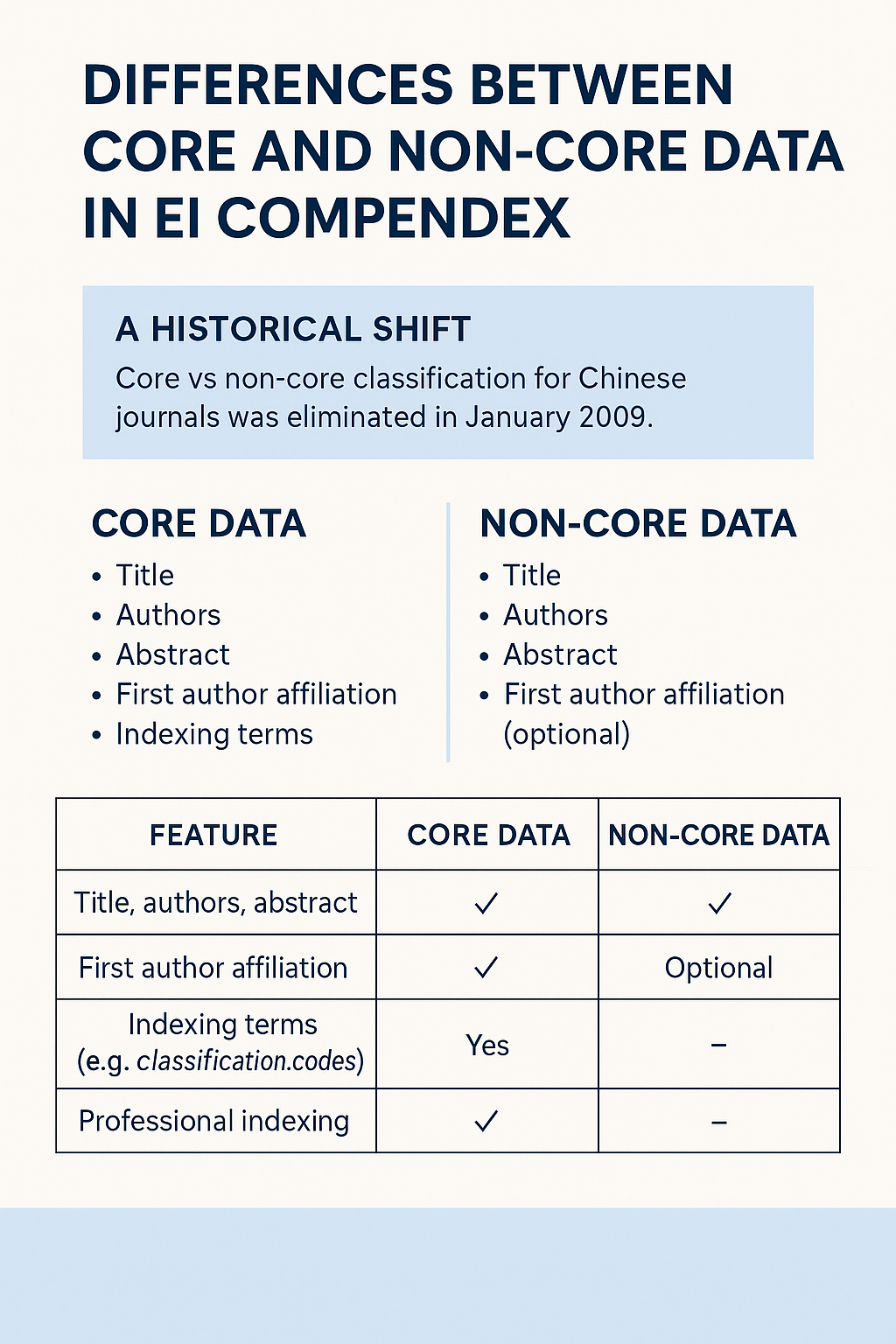Ei Compendex is recognized as one of the world’s most comprehensive engineering indexing databases. For researchers in China and globally, understanding the distinction between core and non-core data is essential, particularly when evaluating historical entries or submission strategies.

Before 2009, Ei Compendex categorized its indexed journals—especially Chinese publications—into two major types: core data and non-core data. This distinction significantly influenced how journals and papers were perceived in terms of academic value and indexing completeness.
Since January 2009, however, Ei made a structural adjustment: the core vs non-core classification was officially abolished for Chinese journals. All Chinese journal entries indexed in Ei Compendex from 2009 onward are considered uniformly under a single standard without differentiation.
As of now, 222 journals from mainland China are indexed in the Compendex Web database. The full list for 2020 can be found in the 2020 Directory of Chinese Journals Indexed by Ei Compendex.
Core data in Ei Compendex was the more complete and curated format of a record. A typical core record included:
Title of the paper
Authors
First author affiliation
Abstract (in English)
Journal name, volume, issue, and page numbers
Classification codes (Ei classification codes)
Main headings (Ei main heading)
Controlled terms (Ei controlled terms)
Uncontrolled terms
These subject terms and classification details were added by professional indexers, giving core records a higher level of detail and discoverability.
By contrast, non-core data came from the Ei Page One database, and typically contained:
Title of the paper
Authors
Journal name, volume, issue, and page numbers
Sometimes: abstract and first author affiliation
It did not include classification codes, main headings, or subject terms, and required no editorial enrichment by Ei staff. As a result, non-core records were less detailed but still part of the searchable database.
Today’s online version of Ei Compendex has combined the earlier online editions of Ei Compendex and Ei Page One into a unified platform. In this current format, what was previously considered core data now represents the full-text enriched section of the database, often referred to as the "core collection" by researchers out of habit.
| Feature | Core Data | Non-Core Data |
|---|---|---|
| Title, Authors, Journal Info | ✅ | ✅ |
| English Abstract | ✅ | Sometimes |
| First Author Affiliation | ✅ | Sometimes |
| Classification Codes | ✅ (Essential) | ❌ |
| Subject Headings & Keywords | ✅ (Main/Controlled/Free Terms) | ❌ |
| Indexed by Professional Staff | ✅ | ❌ |
While the core vs non-core distinction is no longer in use for Chinese journals indexed after 2009, understanding this history helps researchers interpret older Ei records and clarify the depth of indexing. Whether you’re submitting papers or evaluating references, recognizing these layers of data is vital.
For updated conference listings, quality publication opportunities, and trusted academic resources, visit iconf.org—your go-to platform for curated scholarly conferences.